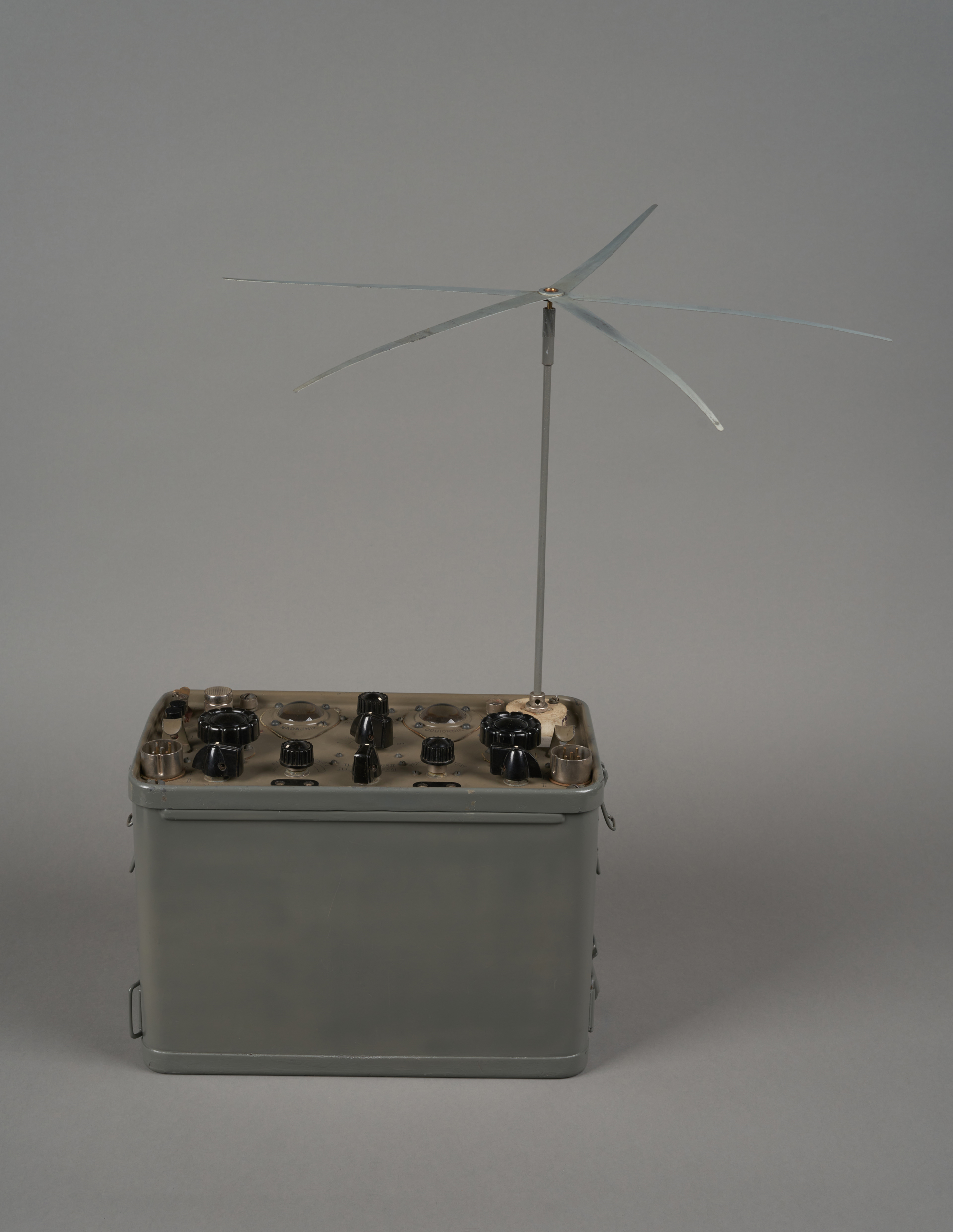
RMB 1 field radio
Centralny Instytut Naukowo-Badawczy Łączności Armii Czerwonej, Zachwatoszin, K. W., Geniszta, J. N., Miczner, I. S., Bieljajew, I. A., Sawodnik, A. W., / 1942 - 1959Creator
Centralny Instytut Naukowo-Badawczy Łączności Armii Czerwonej, Zachwatoszin, K. W., Geniszta, J. N., Miczner, I. S., Bieljajew, I. A., Sawodnik, A. W.
Time and place of creation
Time:
1942 - 1959
The Soviet, portable, two-way (transmission-reception) field radio RBM 1 (Rus.: РБМ-1) is a battery-powered superheterodyne designed for military communication. The device enables telephone (cable), telegraph, and radio communication over simplex. The radio was widely used towards the end of World War II and was later used for training young radio operators and in enterprises and the state-owned economy of the USSR. It was also one of the means of communication for armies of the Warsaw Pact.
The RBM-1 radio was developed at the Central Institute of Science and Research of the Red Army by a team of engineers headed by Alexandr Vladymirowich Sawodnik and Alexandr Fedorowich Oblomov. They were supported by Konstantin Vasilyevich Zakhvatoshin, Evgeniy Niklayevich Genishta, Isaac Samuylovich Michner, and Ivan Artemevich Belyayev.
The RBM-1, which was manufactured from 1942, is an evolution of the RB (3-R) radio from 1938. RBM-1 is a military radio, working in the shortwave range between 1.5 and 5 MHz (200-60 m; divided into two sub-bands, the first being 5.0-2.75 and the second: 2.75-1.5) with an amplitude modulation (AM) system, which enables reception of ultra-low (ULF) and ultra-high (UHF) frequency waves. The device has a telephone channel (TLF) and two telegraph channels (TL GR I, TLGR II). It uses a progressive superheterodyne circuit, as well as a detector and a local telegraph oscillator. Switching from reception to transmission mode is achieved by switching the glowing of vacuum tubes, so there is a delay of several seconds. The design of the device allows telephone communication at a distance of up to 2 kilometres using a cable. For a small whip antenna (an antenna assembled from six segments with a total length of 179.5 cm, ending in a bristle) radio communication has a range of 10 kilometres, and telegraph communication – up to 15 kilometres; both ranges progressively increase with a horizontal dipole antenna, reaching a radius of 17 and 35 kilometres, respectively. The use of a 7 m communication mast (with a set of stabilising lashings allows radio communication to be established over a distance of up to 30 kilometres, and telegraph communication over up to 50 km. The use of a whip antenna allowed communication while in motion, while the other two were used as stationary equipment.
The radio was enclosed in a metal housing resembling two cuboid cans: the first has a cover on the control panel side, and the other contains the receiver battery. The device does not have a built-in speaker, so earphones are needed to use it.
Author: Filip Wróblewski
RMB 1 field radio
Centralny Instytut Naukowo-Badawczy Łączności Armii Czerwonej, Zachwatoszin, K. W., Geniszta, J. N., Miczner, I. S., Bieljajew, I. A., Sawodnik, A. W., / 1942 - 1959Creator
Centralny Instytut Naukowo-Badawczy Łączności Armii Czerwonej, Zachwatoszin, K. W., Geniszta, J. N., Miczner, I. S., Bieljajew, I. A., Sawodnik, A. W.
Time and place of creation
Time:
1942 - 1959











